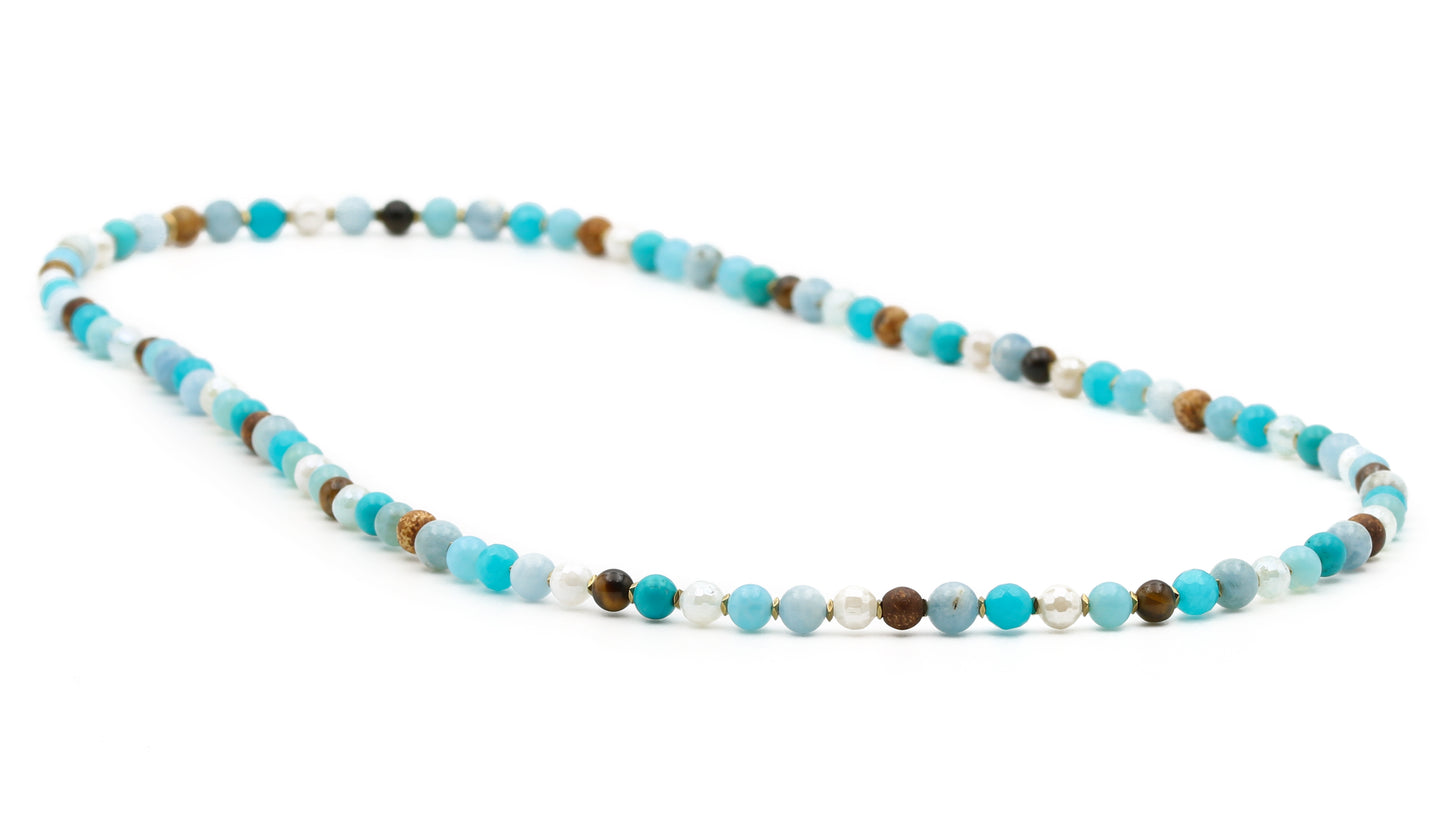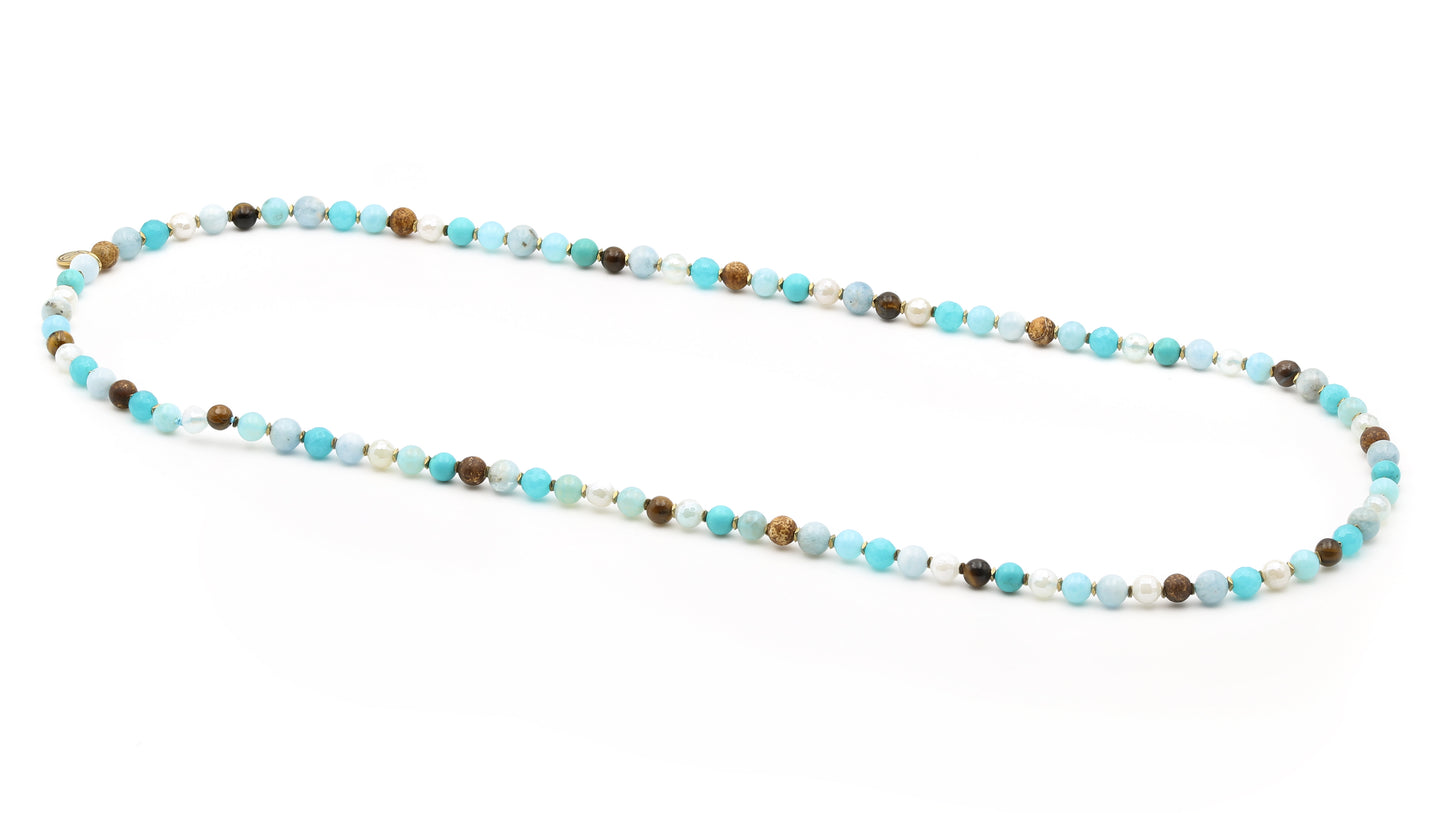Milliondreams Caorle
"Spiaggia dell'Arcomagno" necklace - WATER Collection
"Spiaggia dell'Arcomagno" necklace - WATER Collection
Couldn't load pickup availability
NOTE
NOTE
Tutti i nostri prodotti Million Dreams sono interamente assemblati a mano in Italia, a Caorle. Utilizziamo solo materiali di alta qualità, tra cui pietre preziose, colori specifici e parti in metallo come l'acciaio (Nickel free), l'argento 925 e la placcatura in oro 18 kt. Questi elementi, insieme alla lavorazione artigianale, conferiscono ad ogni pezzo unicità e caratteristiche specifiche che possono includere leggere imperfezioni. Proprio per questa ragione, i colori e le finiture dei prodotti possono variare leggermente rispetto alle immagini campione esposte sul nostro sito o nei nostri cataloghi. Queste variazioni non sono da considerarsi difetti, bensì parte del fascino e dell’autenticità dei nostri articoli, rendendo ogni pezzo unico nel suo genere.
Italy is a treasure chest full of jewels of absolute prestige. From North to South there are thousands of historical-natural wonders capable of enchanting such as the Arcomagno Beach, to which the name of this series is dedicated.
An accessory with a free character, in full Million Dreams ethnic style, to enrich your collection, or for a unique gift to a special person.
All our Milliondreams products they are entirely assembled by hand in Italy, in Caorle. The stones and metal parts (nickel free stainless steel) make their imperfections a specific and natural feature.
Composition in cotton thread, without closure: TIGER EYE + PECTOLITE + VILLAGE STONE + AGATE + HEMATITE + TURQUOISE AULITE
Stones diameter: mm. 6
Circumference: cm. 70
Tiger's eye is a variety of quartz containing inclusions of crocidolite , a mineral belonging to the asbestos group. The presence of these isooriented fibers, yellow in color tending to gold, gives the mass a particular effect called chalking . It is mainly used as a gem for jewelry making usually cabochon cut. The mineral comes mainly from South Africa and is appreciated for its particularity.
There Pectolite is a tricline mineral, whitish or greyish in color, having the formula Ca 2 NaH (SiO 3 ), which is usually found in fibrous-radiated masses, often associated with zeolite.
There Paesina stone consists mainly of compact limestone and clay , or marly limestone, and is almost exclusively typical of Tuscany . Geologically it originated about 50 million years ago ( Eocene - Paleocene ).
The name derives from the fact that this stone hides within it drawings that look like the work of a painter, but are absolutely natural, sometimes surprisingly simulating a landscape. The main mining area is since 1500 in the surroundings of the city of Florence in Tuscany , where particular geological conditions have occurred.
The peculiarity of the stone lies in the designs created by mineralized solutions in the presence of Iron And Manganese , which seem to reproduce ruined cities, stormy seas, inlets, rocks, volcanoes, mountains.
The Paesina Stone strikes for the chromatic contrast of its components, light gray for the limestone , reddish-brown for the iron oxides , black for manganese and blue for the clay .
The agate (from the ancient greek : ἀχάτης , achátes ) is a variety of chalcedony , generic name given to quartz , when this occurs in compact masses of silica microcrystalline with a fibrous-oriented texture. Agate has a typical zoned structure which is visible even to the naked eye, thanks to the diversity of color.
Agate is formed by rhythmic deposition of silica , usually within cavities amygdalari of rocks basaltic , or petrified (agatized) woods.
When the agate is presented in flat and parallel bands, of a contrasting color (light / dark), it takes the name of onyx (from the Greek ὄνυξ, ónyx , nail, for the translucent aspect). Taking advantage of the layers of contrasting color (generally two but, exceptionally, up to five), onyx is used in the glyptic to realize cameos .
Depending on the colors of the bands, there are different denominations:
- brown base layer: sardonyx;
- red base layer: onyx-carnelian.
Hematite , also written as hematite , is a common iron oxide with a formula of Fe2O3 and is widespread in rocks and soils. Hematite is formed in the form of crystals through the rhombohedral reticular system and has the same crystalline structure as ilmenite and corundum.
There howlite is a mineral of the borate class (borosilicate calcium hydroxide). Its name derives from that of its discoverer, the Canadian chemist, geologist and mineralogist Henry How , who first described it in 1868, indicating its approximate chemical composition. It consists of crystalline aggregates, sometimes in compact nodular masses of large dimensions. Crystals, transparent and tabular, are very rare. Crystallizes by evaporation of aqueous substances in evaporitic deposits.
The color is milky white and may have black or brownish veins. Its appearance is opaque with a vitreous luster. Due to its porous nature it is often subjected to blue coloring to imitate turquoise or red to imitate coral.
Although it was discovered in Canada, the main sources today are California and Los Angeles (USA), followed by Nova Scotia (Canada), and the Marmara region of Turkey.
It is mainly used as an ornamental stone.
Share








